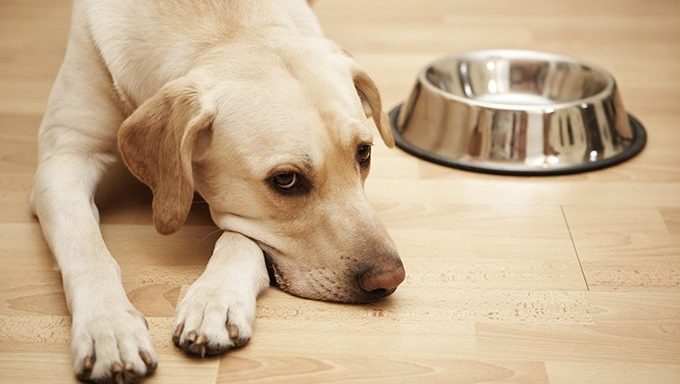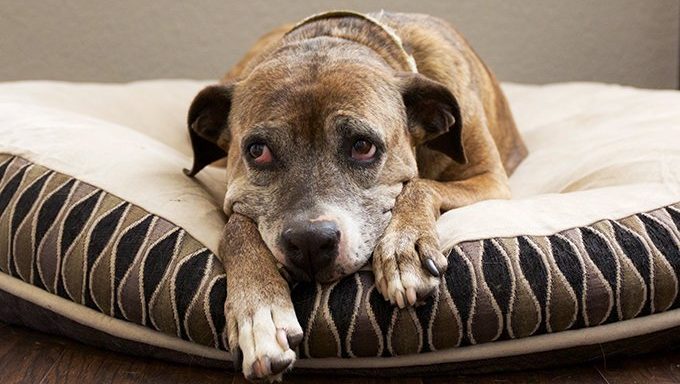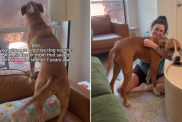Seasonal Affective Disorder, also known as SAD, is known to affect humans. With less sunlight and the colder, grayer days, some people are prone to SAD, which is characterized by episodes of depression during the time of year when the days are shorter.
You may have noticed that, besides some of your some human friends, Fido has also been looking despondent around this time.
While many of us can agree that life is brighter in the summer, feeling restless, mopey, or the typical “winter blues” about the cold weather is not the same as SAD. Affected people may have inexplicable crying episodes, excessive fatigue, and difficulty doing even the most basic of tasks.
Can the lack of sunlight affect our dogs just as severely? Actually, there are several ways it could.
Do Animals Get Seasonal Affective Disorder?

Until recently, there hasn’t been an official diagnosis of SAD in an animal, as there was no model for it. But newer studies on hamsters and grass rats may prove that the seasonal change can negatively affect animals, as well.
When exposed to less sunlight, the hamsters and grass rats acted depressed. The study discovered that there was an alteration in the chemistry of the rodents’ brains. The hippocampus shrank, which is thought to be a reason for depression.
The study hasn’t been directly conducted on dogs, but it shows that the chance of SAD affecting them isn’t inconceivable. After all, dogs are a lot more emotionally complex than hamsters and rats, making it seem more likely that they experience changes in brain chemistry and mood during periods of shorter days.
Some veterinarians think SAD could indirectly affect dogs via their humans, as well. Have you ever noticed how your dog tends to match your mood? Dogs are highly intuitive creatures, especially with the people they spend the most time around.
If you’re unable to pry yourself out of bed on a particularly dark morning, your dog may mirror that despondency.
Can You Help Your Dog Stop Feeling SAD?

So how do you combat possible Seasonal Affective Disorder in your dog? First, you should familiarize yourself with the signs of the condition in humans: excessive lethargy, unwillingness to move or exercise, severe weight loss or gain, bathroom accidents, and in severe cases, even hair loss.
If you notice your dog displaying a number of these symptoms, you should first contact your veterinarian so they can rule out other causes and discuss treatment with you.
If you decide to treat your dog for possible Seasonal Affective Disorder, you can try to combat symptoms in the same way you would with a human: increase exposure to sunlight.
These methods are not proven to work, as tests for SAD in dogs haven’t been fully conducted, let alone tests for treatments. However, some pet parents might find that they work for their dogs.
Again, consult your vet before you try them because some conditions, like skin cancer or eye conditions, can worsen with sunlight exposure.
Boosting Your Dog’s Sunlight Exposure
With your vet’s approval, you can increase your dog’s sunlight exposure by placing your pup’s bed near a window or under a skylight. Try waking up a little earlier and getting in a brisk, sunrise walk.
Not only might these things help lift Fido out of the funk, but the exercise may help boost serotonin levels, as well. Serotonin is the “feel-good” chemical in the brain that often increases with exposure to sunlight and exercise.
Another possible option is an artificial sunlight lamp. Unlike most lamps in your home, these special light therapy products mimic sunlight. You can buy them at most general merchandise retailers or online.
Make sure your pup is awake while using these lamps so their retinas get some exposure to the incoming light. Doctors recommend humans use these lamps at least 45 minutes a day to help combat SAD. Talk to your vet to see if that is a good amount for your pup, too.
Have you noticed your dog feeling down when the days get shorter? How do you help them feel better? Let us know in the comments below!









